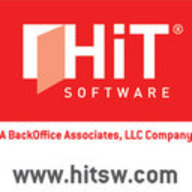

Find out in this report how the two Data Replication solutions compare in terms of features, pricing, service and support, easy of deployment, and ROI.
| Product | Market Share (%) |
|---|---|
| HiT Software DBMoto | 2.2% |
| NetApp Snapshot | 12.0% |
| NetApp SnapMirror | 10.7% |
| Other | 75.1% |
| Product | Market Share (%) |
|---|---|
| Pentaho Data Integration and Analytics | 1.7% |
| Informatica PowerCenter | 6.0% |
| SSIS | 5.7% |
| Other | 86.6% |

| Company Size | Count |
|---|---|
| Small Business | 17 |
| Midsize Enterprise | 16 |
| Large Enterprise | 25 |
HiT Software DBMoto provides an optimal data replication and Change Data Capture solution based on open standards, which enables an IT crew or systems integrator to implement cost-effective, extensible solutions across heterogeneous databases, high-speed analytic systems/platforms and Cloud-based systems
Pentaho Data Integration stands as a versatile platform designed to cater to the data integration and analytics needs of organizations, regardless of their size. This powerful solution is the go-to choice for businesses seeking to seamlessly integrate data from diverse sources, including databases, files, and applications. Pentaho Data Integration facilitates the essential tasks of cleaning and transforming data, ensuring it's primed for meaningful analysis. With a wide array of tools for data mining, machine learning, and statistical analysis, Pentaho Data Integration empowers organizations to glean valuable insights from their data. What sets Pentaho Data Integration apart is its maturity and a vibrant community of users and developers, making it a reliable and cost-effective option. Pentaho Data Integration offers a range of features, including a comprehensive ETL toolkit, data cleaning and transformation capabilities, robust data analysis tools, and seamless deployment options for data integration and analytics solutions, making it a go-to solution for organizations seeking to harness the power of their data.
We monitor all Data Replication reviews to prevent fraudulent reviews and keep review quality high. We do not post reviews by company employees or direct competitors. We validate each review for authenticity via cross-reference with LinkedIn, and personal follow-up with the reviewer when necessary.